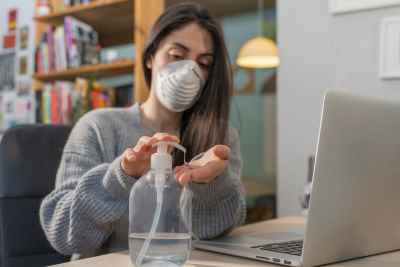
As COVID-19 continues to spread throughout the country and the world, it is vital that employers do everything they can to protect their employees and keep them safe. Employees should feel confident that their workplaces are properly handling this current unique situation.
There are several precautions employers can take, according to the Centers for Disease Control (CDC), to help mitigate the risk for their employees, while also reducing employee concerns and fears.
Critical Infrastructure workers who have had an exposure but remain asymptomatic should adhere to the following practices prior to and during their work shift:
Daily In-person or Virtual Health Checks
Employers should measure the employee’s temperature and assess symptoms prior to them starting work. Ideally, temperature checks should happen before the individual enters the facility. If implementing in-person health checks, conduct them safely and respectfully. Complete the health checks in a way that helps maintain social distancing guidelines, such as providing multiple screening entries into the building.
As long as the employee doesn’t have a temperature or symptoms, they should self-monitor under the supervision of their employer’s occupational health program.
Wear a Mask
CDC recommends wearing a cloth face covering as a measure to contain the wearer’s respiratory droplets and help protect their co-workers and members of the general public. Employers can issue facemasks or can approve employees’ supplied cloth face coverings in the event of shortages.

Social Distance
The employee should maintain 6 feet and practice social distancing as work duties permit in the workplace.
Sick Employees
If the employee becomes sick during the day, they should be sent home immediately. Surfaces in their workspace should be cleaned and disinfected. Information on persons who had contact with the ill employee during the time the employee had symptoms and 2 days prior to symptoms should be compiled. Others at the facility with close contact within 6 feet of the employee during this time would be considered exposed.
Sick employees should follow CDC-recommended steps. Employees should not return to work until the criteria to discontinue home isolation are met, in consultation with healthcare providers.
Disinfect and Clean Workspaces
Clean and disinfect all areas such as offices, bathrooms, common areas, shared electronic equipment routinely. Follow the CDC cleaning and disinfection recommendations.

Educate Employees
- Stay home if they are sick, except to get medical care, and to learn what to do if they are sick.
- Inform their supervisor if they have a sick family member at home with COVID-19 and to learn what to do if someone in their home is sick.
- Wash their hands often with soap and water for at least 20 seconds or to use hand sanitizer with at least 60% alcohol if soap and water are not available.
- Avoid touching their eyes, nose, and mouth with unwashed hands.
- Cover their mouth and nose with a tissue when you cough or sneeze, or use the inside of their elbow.
- Practice routine cleaning and disinfection of frequently touched objects and surfaces such as workstations, keyboards, telephones, handrails, and doorknobs.
- Avoid using other employees’ phones, desks, offices, or other work tools and equipment, when possible. Clean and disinfect them before and after use.
- Practice social distancing by avoiding large gatherings and maintaining distance (at least 6 feet) from others when possible.
COVID-19 testing
Testing can be incorporated as part of a comprehensive approach to reducing transmission in non-healthcare workplaces so that actions can be taken to slow and stop the spread of the virus.
Viral tests – evaluate whether the virus is present in respiratory or other samples. Results from these tests help public health officials identify and isolate people who are currently infected.
Antibody tests – can identify people who may have been previously exposed to COVID-19 and may have developed an immune response to the virus is referred to as the IgG antibody test. The CDC does not currently recommend using antibody testing as the sole basis for diagnosing current infection.

As coronavirus continues to spread, is imperative for employers to communicate with their workforce, take health and safety precautions, monitor information about the virus, and plan and prepare for emergencies.
For information on how your workplace can be tested for the COVID-19 active virus and/or antibodies, contact us at [email protected] or 800-269-0502.
